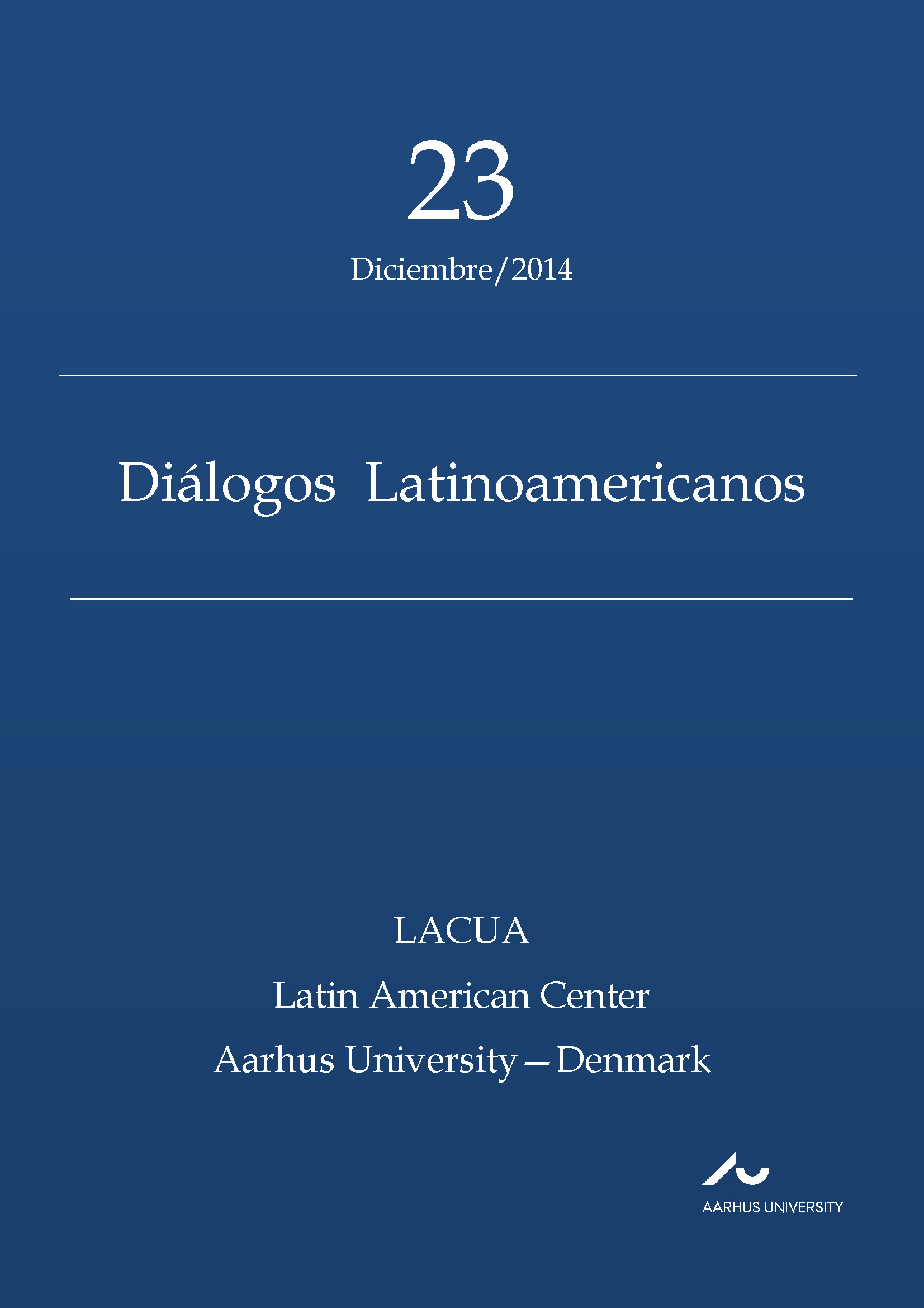As Time Goes By
Social and Physical Immobility in the Lives of Undocumented Immigrants in California
DOI:
https://doi.org/10.7146/dl.v15i23.113125Keywords:
Undocumented immigration, social and physical immobility, the experience of time, United States, Mexico, Central AmericaAbstract
Contrary to popular belief, the current financial crisis has not made the
undocumented immigrants residing in the United States leave the country.
Accordingly, it continues to be of scholarly interest to investigate how life evolves
for these almost 11 million immigrants of predominantly Latin American origin.
Focusing mainly on women from Mexico and Central America, this article shows
that not only physical but also social immobility is a predominant feature of
undocumented, migrant women’s everyday life in the United States. Based on
anthropological fieldwork in California and drawing on the work of Pierre
Bourdieu, this article focuses on the way time is experienced by undocumented
immigrants as they struggle to obtain social mobility while dealing with the
consequences of their illegal status.
References
University Press: Ithaca.
Booth, S. and J. Cole (2007) Dirty Work: Immigrants in Domestic Service,
Agriculture, and Prostitution in Sicily. Lexington Books: Lanham, MD.
Bourdieu, P. (2000) Pascalian Meditations. Polity Press: Cambridge.
Chavez, L. (1998[1992]) Shadowed Lives: Undocumented Immigrants in American
Society. Harcourt Brace College Publishers: Fort Worth.
Coutin, S. (2006[2000]) Legalizing Moves: Salvadoran Immigrants’ Struggle for
U.S. Residency. The University of Michigan Press: Michigan.
De Genova, N. (2010) ‘The Deportation Regime: Sovereignty, Space, and the
Freedom of Movement’, in N. De Genova and N. Peutz (eds.) The DeportationRegime: Sovereignty, Space, and the Freedom of Movement. Duke University
Press: Durham N.C.
De Genova, N. (2005) Working the Boundaries: Race, Space and “Illegality” in
Mexican Chicago. Duke University Press: London.
De Genova, N. (2002) Migrant ‘”Illegality” and Deportabillity in Everyday Life’.
Annual Review of Anthropology 31: 419-47.
Garni, A. (2010) ‘Mechanisms of Migration: Poverty and Social Instability in the
Postwar Expansion of Central American Migration to the United States’.
Journal of Immigrant and Refugee Studies 8: 316-338.
Glick-Schiller, N. and G.E. Fouron (1999) ‘Terrains of Blood and Nation: Haitian
Transnational Fields’. Ethnic and Racial Studies 22(2): 340-361.
Hagan, J. (2008) Migration Miracle: Faith, Hope, and Meaning on the
Undocumented Journey. Harvard University Press: Massachusetts.
Heyman, J., G. Núñez-Mchiri and V. Talavera (2010) ‘Deportation in the U.S.-
Mexico Borderlands: Anticipation, Experience, and Memory’, in N. De Genova
and N. Peutz (eds.) The Deportation Regime: Sovereignty, Space, and the
Freedom of Movement. Duke University Press: Durham N.C.
Hoefer, M., N. Rytina and B. Baker (2011) “Estimates of the Unauthorized
Immigrant Population Residing in the United States: 2010”. Office of
Immigration Statistics, Policy Directorate, U.S. Department of Homeland
Security,
http://www.dhs.gov/xlibrary/assets/statistics/publications/ois_ill_pe_2010.pdf
[accessed on 12 March 2013]
Hondagneu-Sotelo, P. (1997) Working “Without Papers” in the United States:
Towards the Integration of Legal Status in Frameworks of Race, Class and
Gender. In Women and Work: Exploring Race, Ethnicity and Class, ed.
Elisabeth Higginbotham & Mary Romero, 101-26. SAGE Publications:
Thousand Oaks, California.
Hondagneu-Sotelo, P. (2001) Domestica: Immigrant Workers Cleaning and Caring
in the Shadows of Affluence. University of California Press: Berkeley.
Jackson, M. (2013) The Wherewithal of Life: Ethics, Migration and the Question of
Well-Being. University of California Press: Berkeley.
Maher, K. (2004) ‘The Globalization of Social Reproduction: Women Migrants’,
in A. Brysk and G. Shafir (eds.) People out of Place: Globalization, Human
Rights, and the Citizenship Gap. Routledge: New York.
Mahler, S. (1995) American Dreaming: Immigrant Life on the Margins. Princeton
University Press: Princeton, New Jersey
Ngai, M. (2004) Impossible Subjects: Illegal Aliens and the making of Modern
America. Princeton University Press: Princeton, N.J.
Pamuk, A. (2004) ‘Geography of Immigrant Clusters in Global Cities: A Case
Study of San Francisco’. International Journal of Urban and Regional
Research 28(2): 287-307
Passel, J. and V. Cohn (2011) ”Unauthorized Immigration Population: National
and State Trends, 2010”. Pew Hispanic Center,
http://www.pewhispanic.org/2011/02/01/unauthorized-immigrant-populationbrnational-
and-state-trends-2010/ [accessed on 12 March 2013]
Sabogal, E. (2005) ‘Viendo en la Sombra: The Immigration of Peruvian
Professionals to South Florida’. Latino Studies 3(1): 113-131
Spener, D. (2009) Clandestine Crossings: Migrants and Coyotes on the Texas-
Mexico Border. Cornell University Press: Ithaca.
Vigh, H. (2009) Wayward Migration: On Imagined Futures and Technological
Voids. Ethnos 74(1): 91-109
Downloads
Published
How to Cite
Issue
Section
License
Counting from volume 31 (2022), articles published in Diálogos Latinoamericanos are licensed under CC-BY 4.0. Read more about the license terms here https://creativecommons.org/licenses/by/4.0/.
No Creative Commons license applied on volumes 1-30. All rights reserved by the authors. Readers may download, read, and link to the articles, but they cannot republish the articles.
With the publication of volume 31 (2022), authors retain the full copyright to their articles and give Diálogos Latinoamericanos the right to the first publication. Authors also retain copyright to earlier versions of manuscripts, such as the submitted (pre-print) and the accepted manuscript (post-print).
Copyright to articles published in volumes 1-30 is held by the authors.





